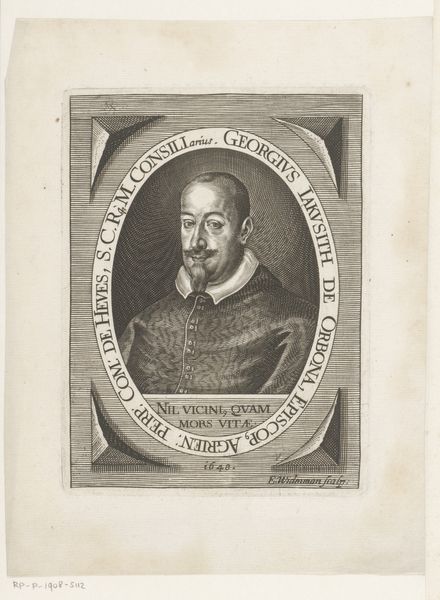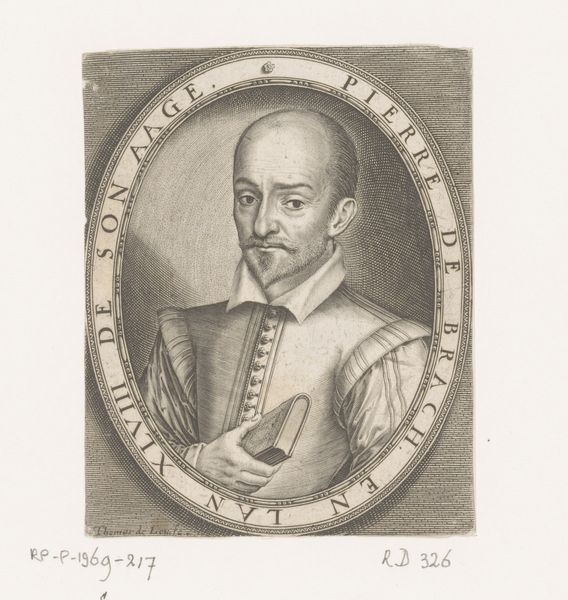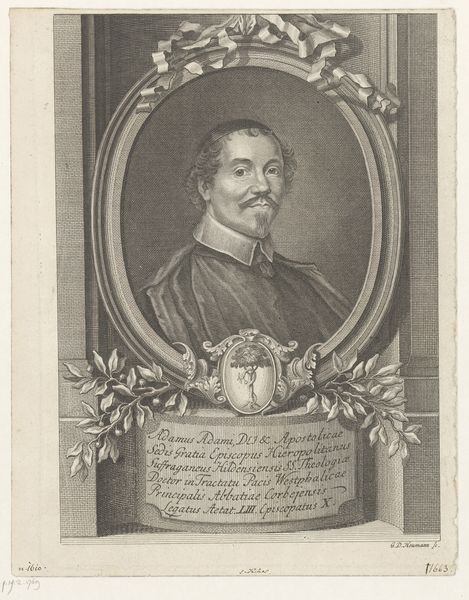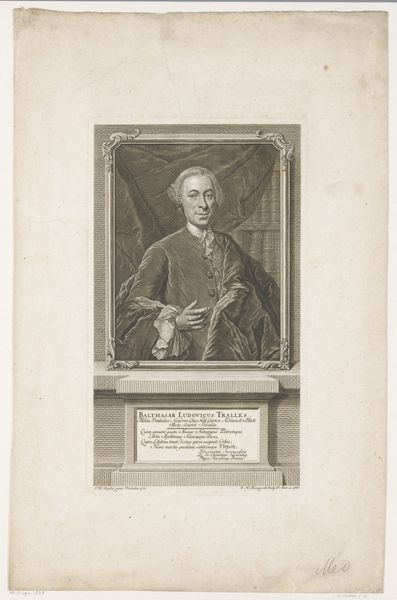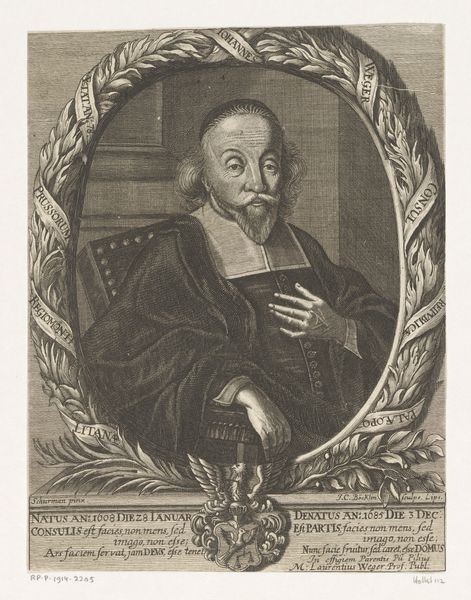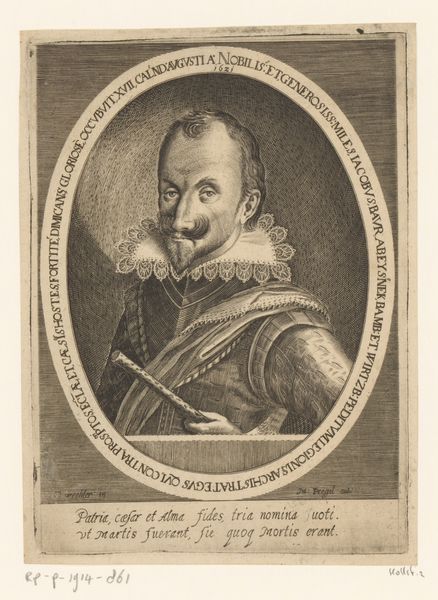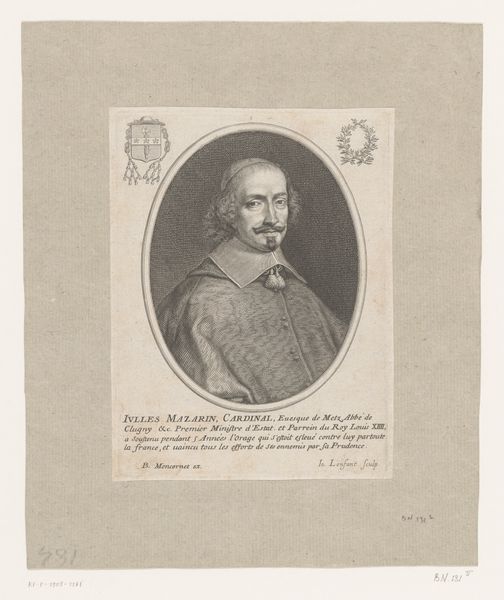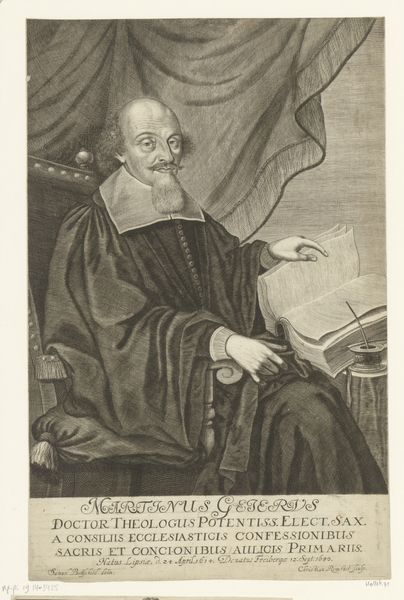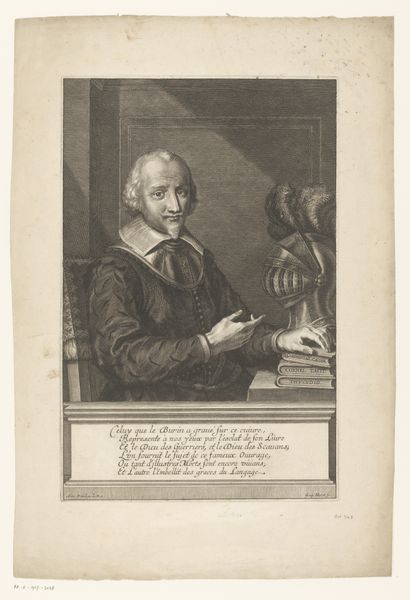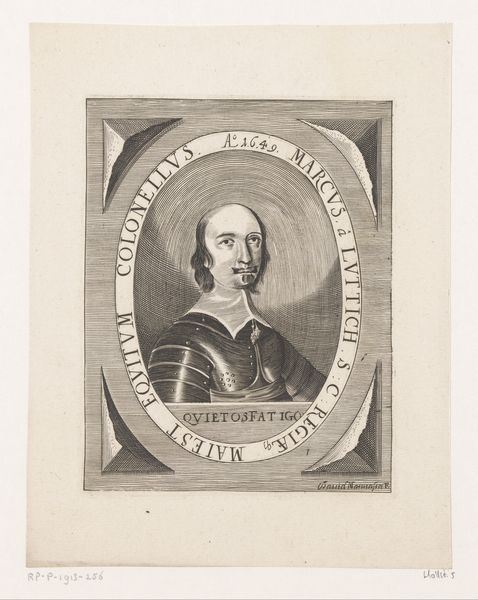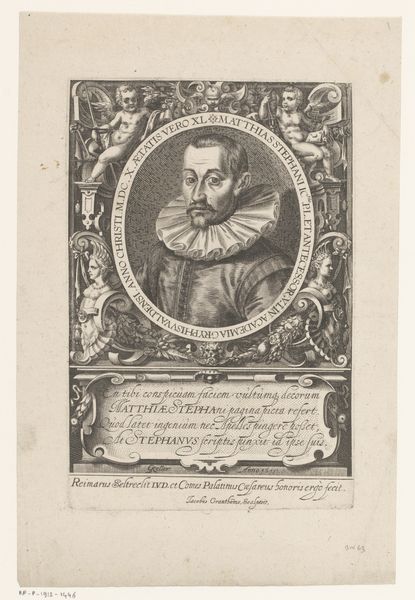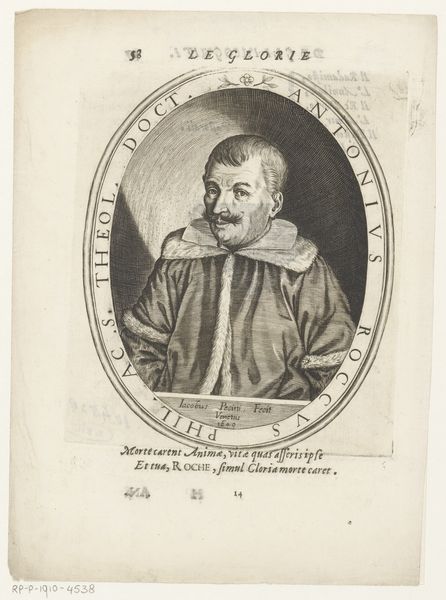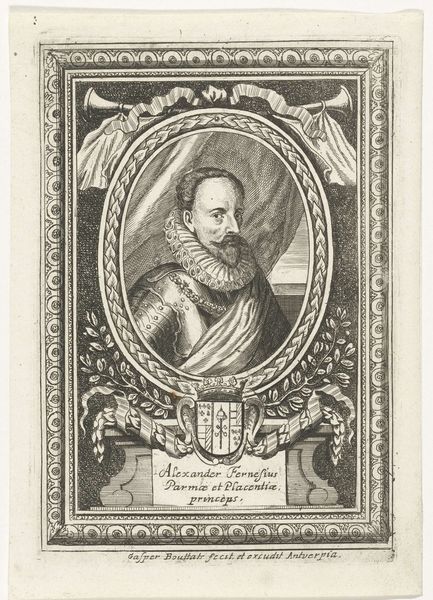
engraving
#
portrait
#
baroque
#
old engraving style
#
classicism
#
line
#
history-painting
#
engraving
Dimensions: height 166 mm, width 116 mm
Copyright: Rijks Museum: Open Domain
This print of Anselm Casimir Wambold von Umstadt was made in 1646 by J. B. van Anvien. It portrays a man of high rank, identified by his opulent attire and the crown positioned prominently in the foreground. The image speaks to the politics of representation in seventeenth-century Europe. Anselm Casimir was Archbishop of Mainz, one of the most powerful Prince-Electors of the Holy Roman Empire. The print creates meaning through visual codes of wealth, power, and status. Consider the composition, which reinforces hierarchy. Anselm Casimir’s garments identify him as a member of the aristocracy, sanctioned by the Catholic Church. By studying prints like this in relation to their social and institutional context, we gain insight into the networks of power and patronage that shaped European society. Further research might uncover the patron or institution for whom van Anvien created the print. As an art historian, I’m interested in understanding the role of such images in reinforcing social structures.
Comments
No comments
Be the first to comment and join the conversation on the ultimate creative platform.
